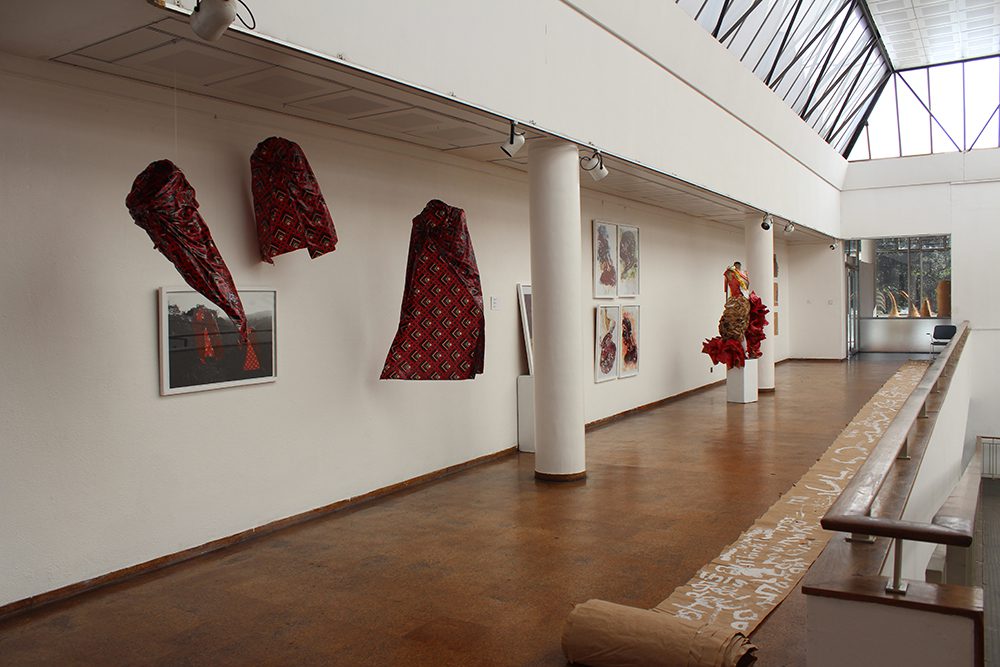Recently appointed executive director of the National Gallery of Zimbabwe, Raphael Chikukwa talks to C& about digitization as a way to overcome present challenges.

The National Gallery of Zimbabwe
Contemporary And (C&): What is your pledge to the arts sector?
Raphael Chikukwa: It’s a great honor to be given the position of head of one of the most important cultural institutions in Zimbabwe and in Africa at large during the very critical time of the COVID-19 pandemic. When I was appointed as the acting executive director in March, COVID-19 had just struck the world. And I remember very well that early this year we had the Freedom through the Eyes of General Tongogara exhibition where we hugged, greeted each other, and shook hands. Little did we know that that was going to be a thing of the past. And then the David Palascio exhibition which was set to open remained in quarantine. The arrival of COVID-19 caught us as a cultural institution off-guard because our online presence was nowhere to be seen. It is this that I have been reflecting upon: how to refocus and rethink the national gallery’s operations. Because the cultural landscape has changed extensively since the pandemic struck and we have to be mindful of that change. Our new path is something which is still in my mind – I need to chew on it, reflect upon it. The gallery basically needs rebuilding in terms of its team – somebody has to fill in the position of the chief curator of the contemporary art of Zimbabwe and another one fill the curator of education post left by Fadzai Muchemwa, who has gone to study in South Africa for two years. I pledge to serve Zimbabwe’s contemporary art sector and the African arts sector and add value to these practices.

Installation View of “Freedom through the eyes of General Tongogara” at The National Gallery of Zimbabwe, 2020. Courtesy the gallery.
C&: How does this pledge manifest in the digital space?
RC: Our Harare Conversations, live online, have become a platform for discussions with artists and curators from Kenya, Senegal, South Africa, Namibia, and Europe. That has kept the gallery alive in its online visibility. We have published on YouTube twenty-eight episodes – Harare Conversations and Bulawayo Conversations – in the COVID-19 era. We also held four exhibitions on our website and screened an “art adventure” tutorial on YouTube. This has connected us to more people than those we held physically in the gallery, so the pandemic has pressured us to redefine our public programming and interactions. We want to continue the online conversations, online exhibitions, and more research for exhibitions as we enter onto this new path. And as we do so it is very important that we give each other time, because one has to build a team and that team has to find each other, and finding each other is not an overnight event.
C&: What are other issues that you are focusing on?
RC: Building a strong curatorial team is one of the first and foremost important things. We need an in-house designer; we already have an IT person. The gallery needs to build a digital back office which will feed into both Harare and our regional galleries, Bulawayo and Mutare, so that there is a singleness in our operations and our institutional branding. And our collection needs to work for us digitally, because there is this whole digital rush across cultural institutions in music, theater, dance, and museums. We have a very eclectic collection that must be amplified digitally. Let’s look at COVID-19 as a fertile ground for creativity, not as destruction.

David Palacios, The Point of View, 2020. Installation View at the National Gallery of Zimbabwe. Courtesy the Gallery.
C&: How are you going to run art education in this COVID-19 era?
RC: Like any other educational institution that has been affected by the pandemic. Education needs to adjust to the new normal, which is not normal. Social distancing, temperature screening, sanitary practices for all our students and monitoring the equipment they use in classes – no exchange of brushes, for example, or passing things on to the next student. We have to be vigilant in making sure that we follow procedures set out by the COVID-19 task force team and the WHO, so that we can continue operating as creators and learners.
We have already started doing Zoom meetings and I am thankful to Detroit-based Zimbabwean artist Chido Johnson, who has been giving us funding to be able to do this. But it’s difficult for students because the bundle is not cheap.
Tinashe Muchuri is a performing poet, actor, writer, based in Harare, Zimbabwe and a student from the C& Critical Writing Workshop which was held in Harare in September 2017 and made possible by the support of the Ford Foundation.
More Editorial